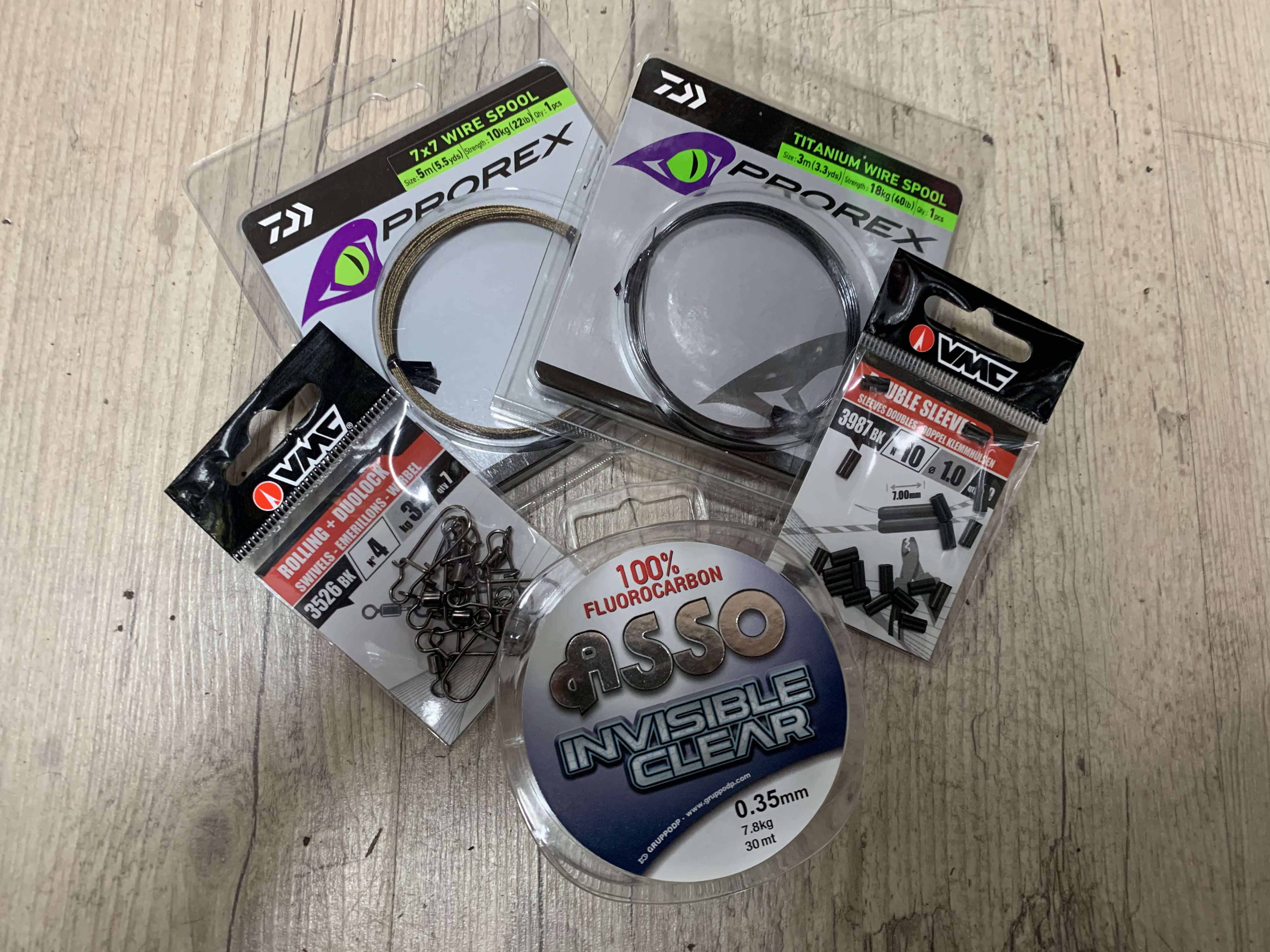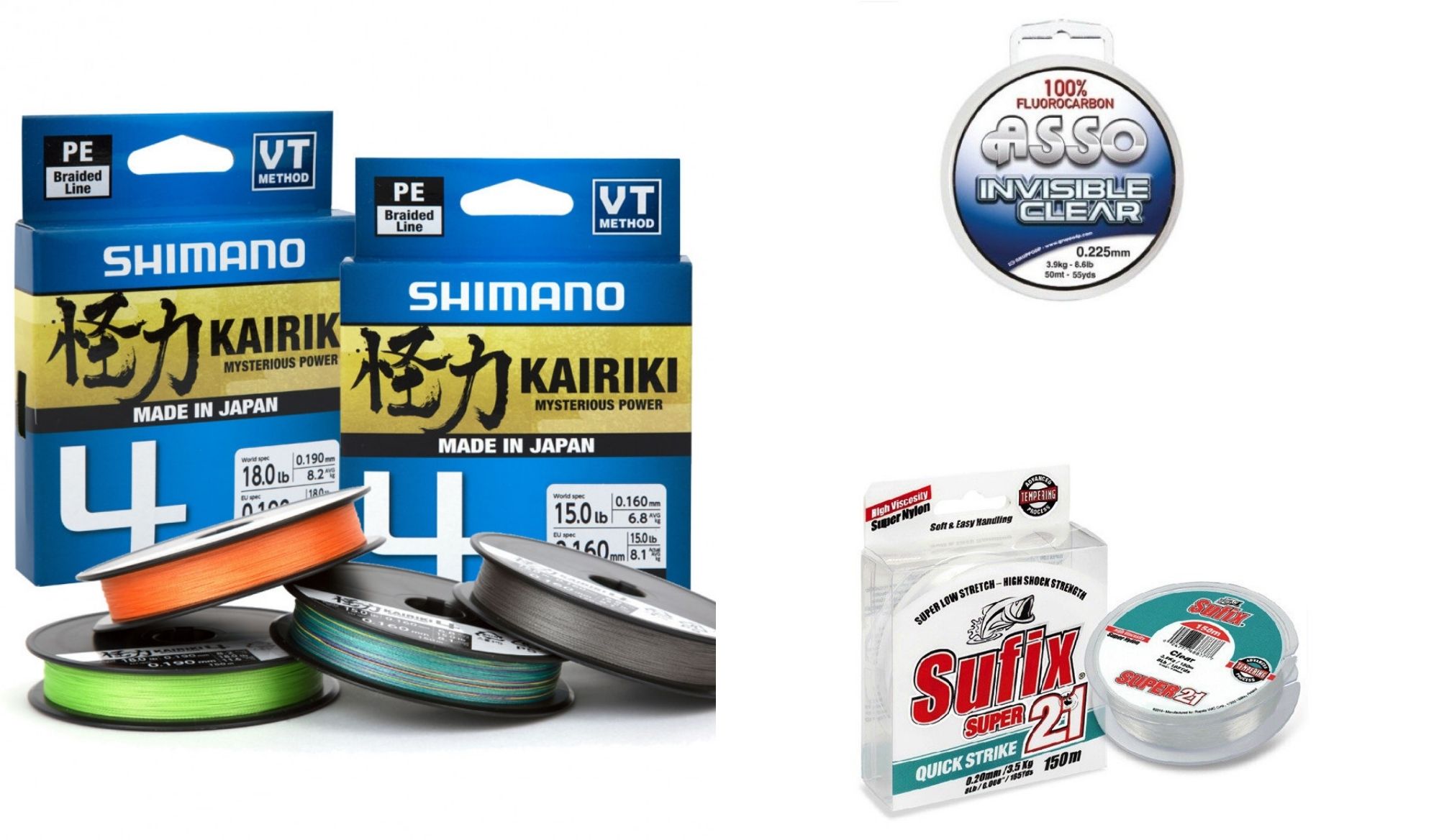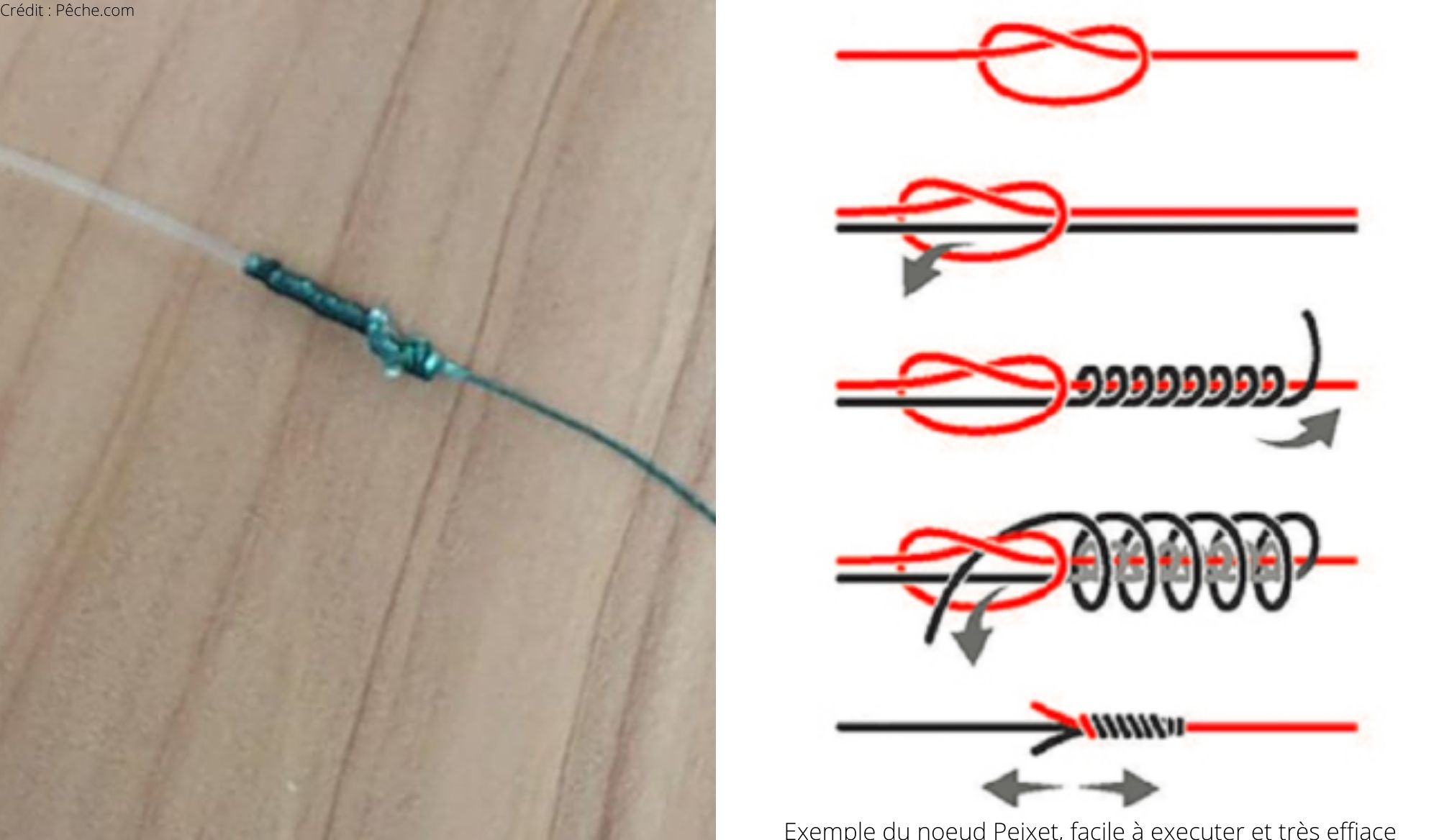
Lure fishing has developed considerably in recent years. Manufacturers offer us ever more incredible products, at the cutting edge of the latest technology, as can be seen from our collection of lures for predator fishing, which continues to grow day by day. Rods, lures, reels and lines now come in a wide variety of models, ready to demonstrate their full potential in a particular technique. It's the latter that we'll be looking at in terms of the different parts of your rigs.
Filling the spool of your reel with line will be your first mission in order to complete your rig. We'll explain how to choose the right diameter depending on the strength and species of fish you're after. We'll also look at the main differences between braid, nylon and fluorocarbon.
Next we'll look at the leaders, which are the lower part of your rig. They generally include thehook,swivel and a strong or discreet material, depending on the species you are fishing. You'll notice that size can be important, as can shape, which will target some predators and not others.
Finally, it's important to take stock of the knot you can make for the different fittings you encounter. The need for freedom of certain swimming fish, particularly those on the surface, requires you to make a technical loop, so this is useful advice for making the right choices. All that's left for you to do is choose the colour that best suits the season you're fishing, and you'll be ready for maximum enjoyment.
The line body

This is the line that will fill the main spool of your reel. It will slide along the rings of your rod to reach casting distances of varying distances. Its purpose is to provide a connection between your lure and its hook. Different manufacturers offer 3 different types of product.
Nylon, or more commonly known as thread, is undoubtedly the type that has been most widely used since the practice was first discovered. Replacing the horsehair of yesteryear, it offers an industrial solution for all anglers. It has the advantage of being particularly elastic naturally and offers greater resistance. It's perfect for fishing with lures that pull hard on the rod or line, such as spoons or crankbaits.
Braid has come to take its share of the cake in terms of sales, but also in terms of performance. Indeed, anglers have sought to improve their technique even further. This meant casting further, and the solution was to reduce the diameter. Braid was able to offer this alternative, which has now become widespread. You'll also gain in feel thanks to the total loss of elasticity compared with nylon.
The latest material to fill your reel is fluorocarbon. Colourless, it has the significant advantage of being invisible underwater. It is also resistant to abrasion while offering a very good feel thanks to its very low elasticity. It will be the partner of many anglers looking for new sensations.
Choose from our collection of hook and line accessories
The leader
.jpg)
This is the lower part of your rig. It must be flawless to ensure success against the sharp teeth of predators, but also against their distrust. It is made up of various elements, all of which are of vital importance.
First of all, it's essential to choose the type of material. You'll regularly have a choice of several options. Steel remains one of the most widely used. It has the advantage of not shearing the pike. Fluorocarbon could be an interesting option for invisibility, bearing in mind that you shouldn't skimp on the section you choose.
Braid can also be used when fishing for certain predators. Pike-perch are a particular favourite with some anglers. You can also turn to the many advantages of titanium to combine almost all the qualities you need for success.
Other factors are also important. You'll want quality sleeves, but above all you'll want swivels and hooks you can trust. Certain shapes work better with certain techniques. For example, staples with the point outwards will be perfect for using weight heads. Closed models, on the other hand, are perfect small accessories for hard bait, preventing weeds from being brought in or snagging.
Of course, you'll need to choose your singles and triples carefully. Corrosion indexes and special finishes will give you clues for your freshwater or saltwater practices.
When it comes to making your mounts for direct installation on your large soft lures, you need to take the same precautions as when selecting your tackle. The construction material and anti-corrosion finish will be aspects not to be overlooked. Shallow systems for fishing close to the surface or release systems will be your partners for regularly successful hook-ups.
Discover our collection of rig accessories
The different connectors

Of course, to put all these elements together, you'll need to think about tying them together. This can be done in a number of ways, again depending on the fish you're after and the technique you use. The season may also have an impact.
The knot remains your main ally during your lure sessions. With a few good tips from anglers with many years' experience behind them, you should quickly become an outstanding knot-tyer, able to tie your lures into the shape you want ever more quickly.
There are many different ways to tie your knots. They range from the simplest, such as spoon knots, which require very little dexterity, to Albright knots, which require a lot of work before you can master them. You may need a loop, for example, to give hard bait freedom, or a sliding system to firmly hold the eye of a spoon or shallow rig.
Our other articles about lures :
